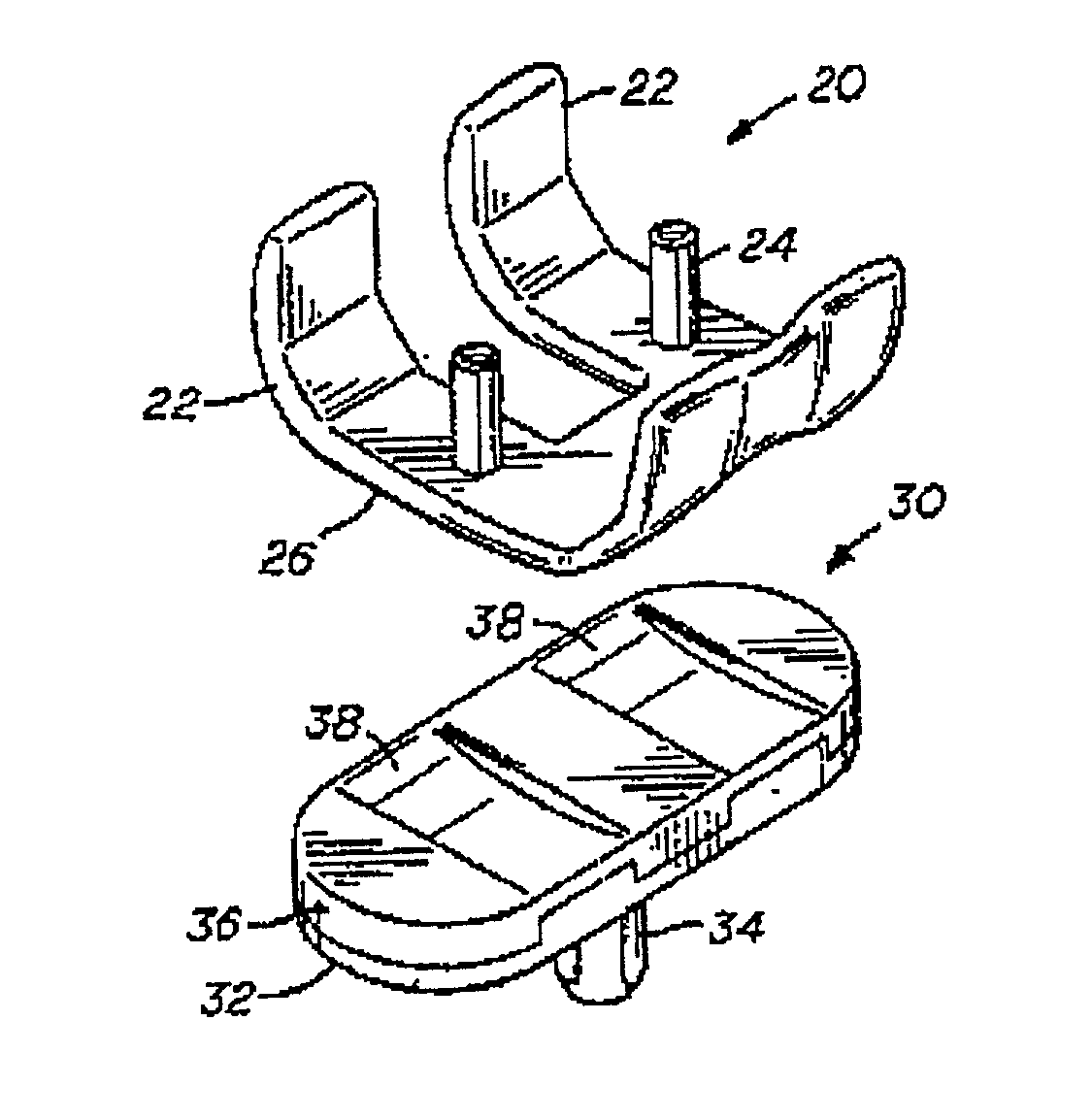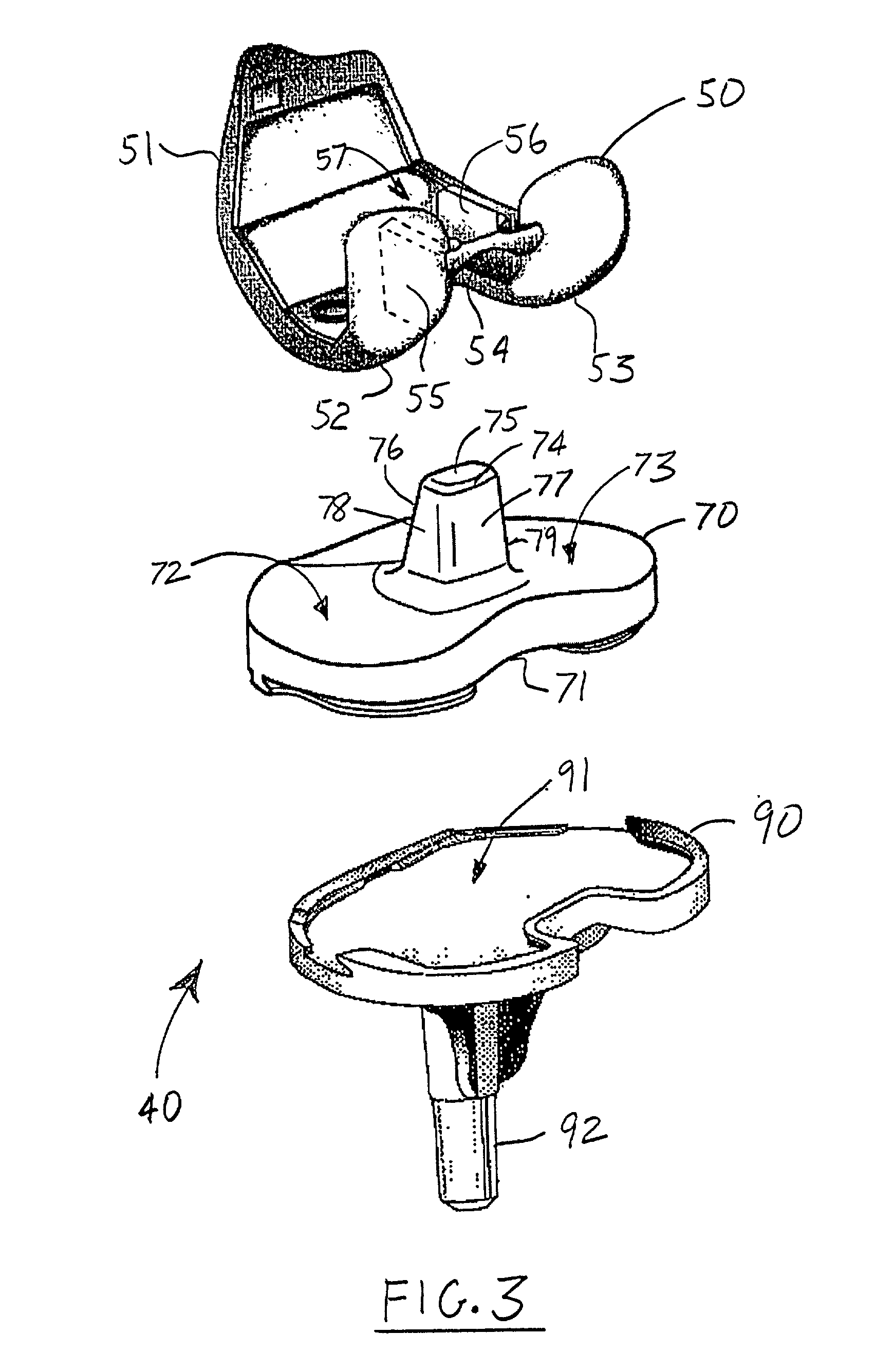Posterior stabilized knee system prosthetic devices employing diffusion-hardened surfaces
a prosthetic device and diffusion hardening technology, applied in the field of orthopaedic prosthetic devices, can solve the problems of diffusion hardening surface of posterior stabilized knee prosthetic devices, wear problem of posterior stabilized knee prosthetics, adhesive and abrasive wear of central posts,
- Summary
- Abstract
- Description
- Claims
- Application Information
AI Technical Summary
Benefits of technology
Problems solved by technology
Method used
Image
Examples
Embodiment Construction
[0026] FIGS. 1 and 2 show a typical knee joint prosthesis as disclosed in the prior art where porous bead or wire mesh zirconium oxide coatings can be applied to the tibial or femoral components of the knee or both. The porous metal bead or wire mesh coating is incorporated to allow stabilization of the implant by in-growth of surrounding tissue into the porous coating. The knee joint includes a femoral component 20 and a tibial component 30 with a tibial insert 36. The femoral component includes condyles 22 which provide the articulating surface of the femoral component and pegs 24 for affixing the femoral component to the femur. The tibial component 30 includes a tibial base 32 with a peg 34 for mounting the tibial base onto the tibia. A tibial platform 36 is mounted atop the tibial base 32 and is supplied with grooves 38 similar to the shape of the condyles 22. The bottom surfaces of the condyles 26 contact the tibial platform's grooves 38 so that the condyles articulate within t...
PUM
| Property | Measurement | Unit |
|---|---|---|
| strength | aaaaa | aaaaa |
| wear resistance | aaaaa | aaaaa |
| thickness | aaaaa | aaaaa |
Abstract
Description
Claims
Application Information
 Login to View More
Login to View More - R&D
- Intellectual Property
- Life Sciences
- Materials
- Tech Scout
- Unparalleled Data Quality
- Higher Quality Content
- 60% Fewer Hallucinations
Browse by: Latest US Patents, China's latest patents, Technical Efficacy Thesaurus, Application Domain, Technology Topic, Popular Technical Reports.
© 2025 PatSnap. All rights reserved.Legal|Privacy policy|Modern Slavery Act Transparency Statement|Sitemap|About US| Contact US: help@patsnap.com



